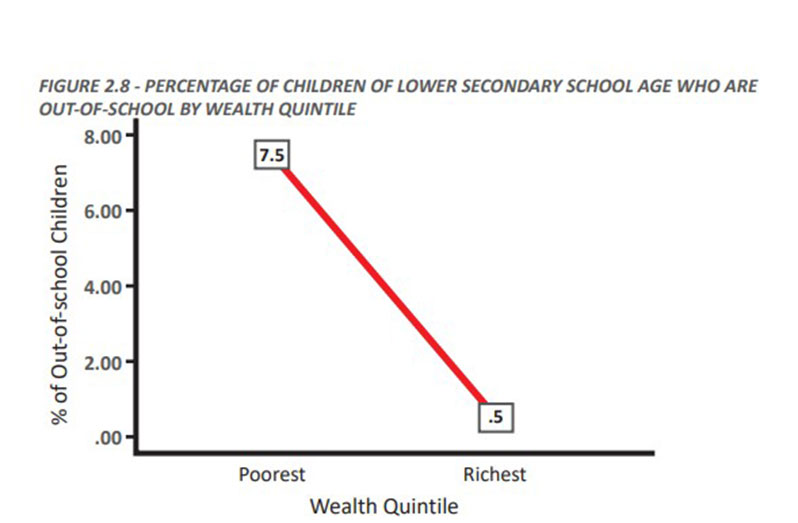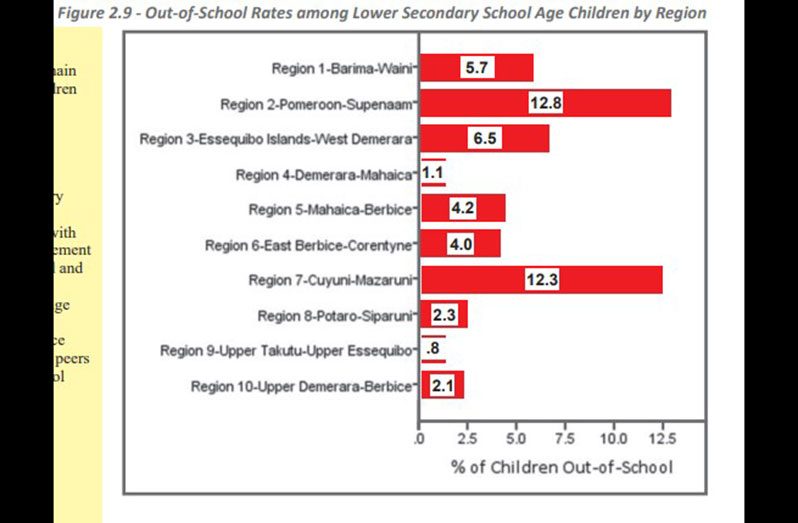THE Ministry of Education (MoE) has disclosed that a total of 6.2 per cent of 14-year-olds left school during the 2016 to 2017 period, making them the highest percentage of out-of-school children in lower secondary school.
This data was included in the ministry’s recently released Education Sector Plan (ESP) 2021 to 2025.
According to the information gathered by the ministry, this number is in stark contrast to the 3.9 per cent of 13-year-olds and 1.6 per cent of 12-year-olds who were out of school during that period.
The ministry intends to utilise the statistics and findings in its ESP to develop and institute initiatives in the years 2021 to 2025 to minimize the number of out-of-school children at the primary and secondary school levels.

According to the data, the percentage was substantially different between children from the lowest income homes and those from middle- and high-income homes.
Comparatively, the out-of-school rate was 7.5 per cent among lower secondary school children from low-income homes and only 0.5 per cent for those from middle and high-income homes.
Regions Nine and Four stood out for having the lowest percentages of out-of-school children in lower secondary school, recording 0.8 and 1.1 per cent respectively.
It was observed that Region Two (Pomeroon-Supenaam), had the highest percentage. According to the data, 12.8 per cent was not in school for the identified period. Region Seven (Cuyuni Mazaruni), had the next highest rate of 12.3 per cent while Region Three (Essequibo Islands-West Demerara) had 6.5, followed by Region One (Barima-Waini), with 5.7 per cent.
For Region Five (Mahaica-Berbice), 4.2 per cent was recorded while in Region Six (East Berbice-Corentyne), the percentage was 4; in Region Eight (Potaro-Siparuni), 2.3; and in Region Ten (Upper Demerara-Berbice), 2.1.
The ministry highlighted that much focus will be placed on the fact that the likelihood of early school leaving increases with age. It intends to craft policies over the next five years to tackle that.
Meanwhile, primary schools, during the 2016 to 2017 period, also recorded a minuscule percentage of out-of-school children between the ages of five and 12. Statistics revealed that just 4 per cent of primary school children were out of school.
The ministry’s analysis of the data indicated that four regions stood out above the national average concerning out-of-school rates at the primary level. Region Eight had 5.8 per cent; Region Two, 3.6 per cent; Region 10, 2.9 per cent, and Region One, 2.8 per cent. These regions had the slightly higher percentages when compared to the other areas.




.png)









